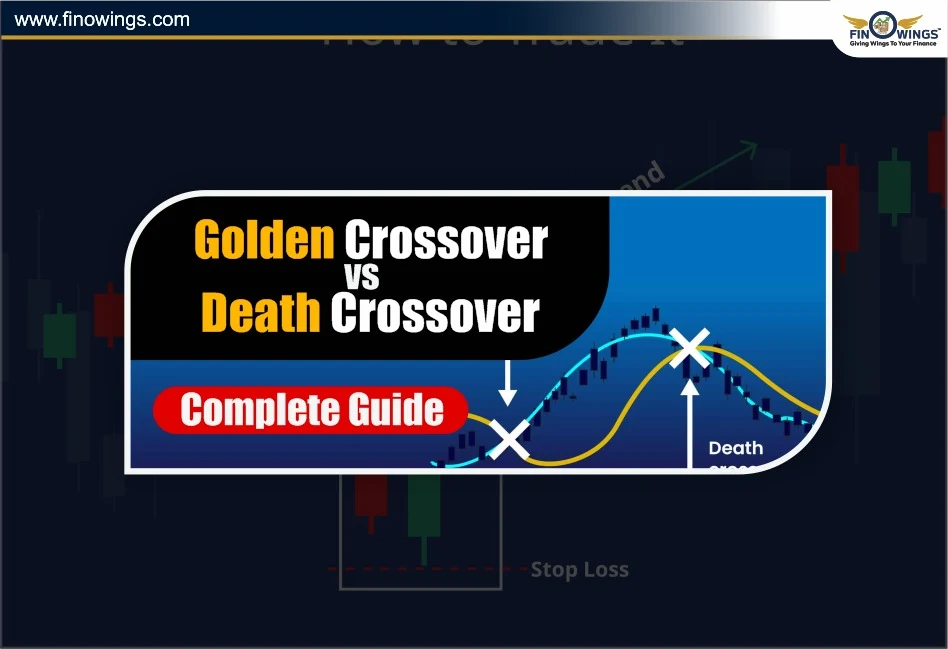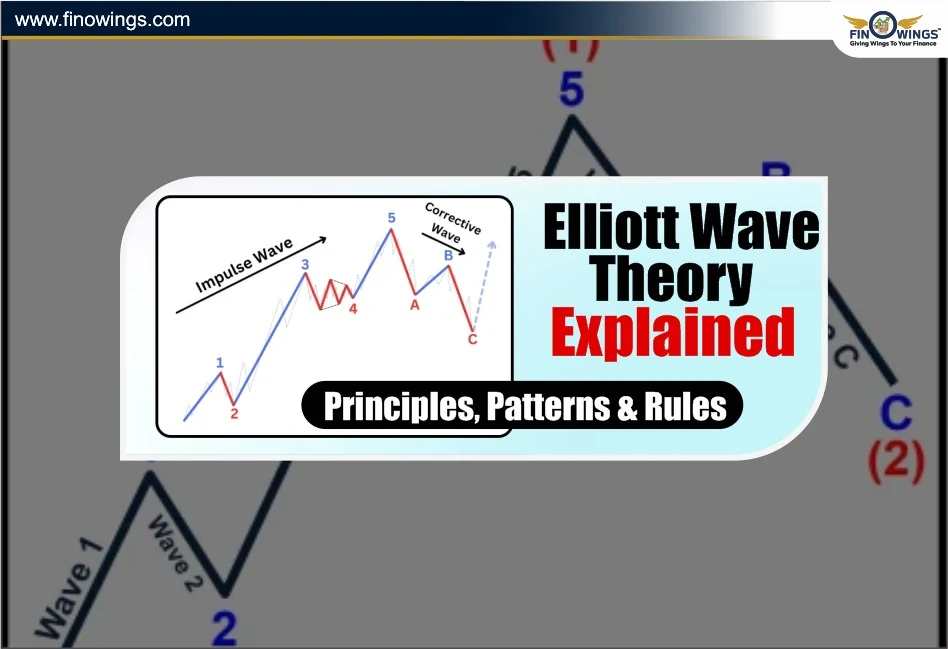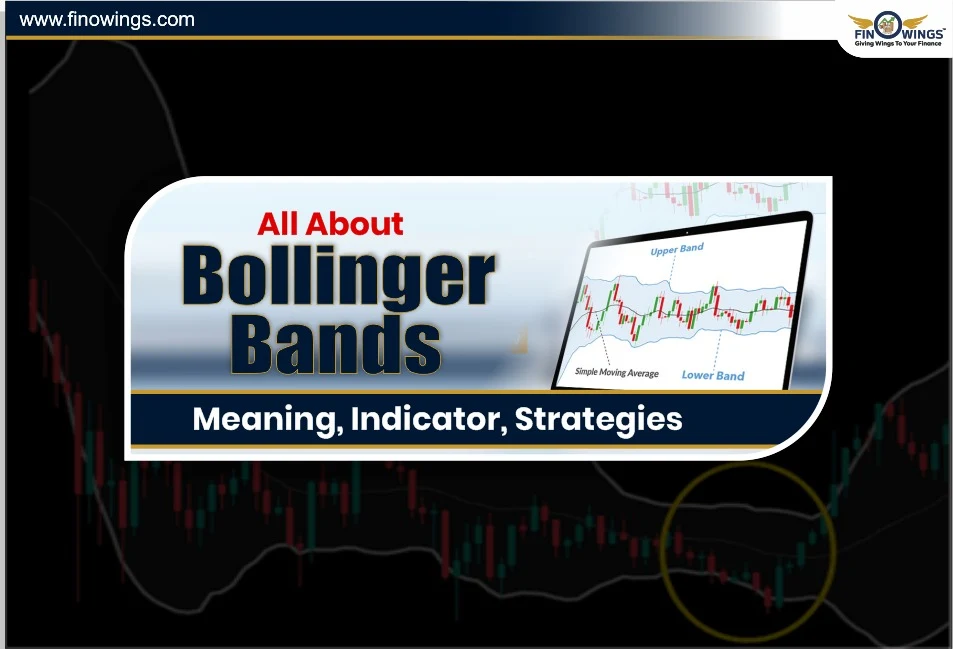Home >> Blog >> Dow Theory Explained: Meaning, Principles & How It Works
Dow Theory Explained: Meaning, Principles & How It Works

Table of Contents
Dow Theory is one of the oldest concepts in stock market history and is still widely acknowledged and utilised today in market evaluations. Dow Theory is the first building block of technical analysis and is vital to understanding the movements of the markets.
In this blog, we will explain Dow Theory and elaborate on the principles of Dow Theory and its functionality in stock markets.
Usages of Dow Theory
Dow Theory describes the stock market movements, evaluations, and economic conditions in the scope of business. Dow Theory is one of the oldest and most respected theories in stock market evaluations.
Dow Theory definition- Dow Theory states that there are no random movements in the stock market. Some movements form a trend and these movements can be thoroughly analysed.
The Key Idea Behind Dow Theory
Dow suggested that the stock market contains all the information that is available, and the actions of all the investors create observable stock market trends. These trends can be analysed to determine the probable direction the market is likely to move in the future.
The three key points that Dow focused on were:
1. The market does not move randomly and can be predicted.
2. Trends move in different phases which are the start, the growth, and the end.
3. Value and price confirm one another and one should support the other.
These ideas formed the basis of modern technical analysis.
Six Basic Principles of Dow Theory
Let’s analyse the six key principles of Dow Theory that Charles Dow outlined and that William P. Hamilton, Robert Rhea and others expanded on.
1. The Market Discounts Everything
The stock market contains all available information which consists of economic information, sentiment from investors, political information, and expectations of the future.
Therefore, prices are able to change in response to newly available information which is why price movement analysis is so critical.
2. Three Trends in the Market
Dow identified price movements in the market as having three different trends:
Primary Trend: The overall market direction (bullish or bearish) in the long-term movements lasting from months to years.
Secondary Trend: The pullbacks in the primary trend movements which occur in the short-term and last from weeks to months.
Minor Trend: The daily fluctuations that last from days to weeks and are driven mainly by trader sentiment.
To illustrate, a bull market (primary trend) might continue upward after several short corrections (secondary trends).
3. Three Phases in Each Primary Trend-
Dow noted the major trends occur in three different phases one after the other:
Accumulation Phase: Smart investors begin buying when the market sentiment remains negative.
Public Participation Phase: General investors notice the trend and begin purchasing, moving the price.
Excess or Distribution Phase: The “smart money” selling kicks in as prices become overvalued, and overconfidence prevails.
These phases allow the trader to be in-sync with market timing.
4. Each Other Must Confirm The Averages
To track the market, Dow created the Dow Jones Industrial Average (DJIA) and the Dow Jones Transportation Average (DJTA). According to Dow Theory, a trend is confirmed only when both averages move together.
For example, when industrials do well but transports do poorly, that trend is probably not lasting.
The reasoning is this: when goods are produced but not moved, genuine economic improvement is doubtful.
5. Volume Confirms the Trend
Volume is an important confirmatory indicator. If prices move in a given trend with high trade volume, the movement is considered ‘strong.’ On the other hand, if trade volume falls or increases when prices move in a certain direction, this denotes a loss of momentum.
For example, while in an uptrend, prices should rise with higher volume and fall with lower volume. This shows that the trend is supported by the participation of investors.
6. A Trend Remains in Effect Until a Clear Reversal Occurs
Dow argued that trends continue in their direction without clear evidence of a reversal. During a trend, temporary pullbacks do not suggest a change. A reversal is only to be considered when the price breaks key support or resistance levels and confirms the move. The basis of the following quote is due to the principle above:
“The trend is your friend until it bends.”
Check out our comprehensive blog on CAPE Ratio to learn how market valuation indicators complement Dow Theory's trend analysis methodology by identifying overvalued or undervalued markets.
How Dow Theory Works in Today's Trading
Though Dow Theory was developed in the early 1900s, it remains as useful as ever.
This is how it is still used today:-
1. Identifying Market Phases
Investors are able to get ahead of market cycles by identifying the accumulation, participation, and distribution phases.
2. Determining Market Direction
With regard to Dow's framework, investors are able to tell whether the overall sentiment is bullish, bearish, or neutral by using the averages and trend confirming methods.
3. Timing Entries and Exits
To know whether to enter during a trend continuation or exit during a trend reversal, traders look for volume, price patterns, and confirmation signals.
4. Long-Term Investment Analysis
Dow Theory is used by institutions to align their portfolio allocation on macro trends. For example, they will decrease portfolio allocation during bear markets and increase it during bull runs.
Dow Theory in Today's Market
Although algorithms and real-time data analytics have advanced, Dow Theory is still the foundation of technical market analysis. Modern analytics like moving averages, MACD, and trendlines are all products of the core principles espoused by Dow.
Integrating Dow Theory with newer tools offers a comprehensive view as it integrates classic market psychology with a quantitative approach.
Limitations of Dow Theory
-
It has great value but Dow Theory has some limitations.
-
As with any theory, it will always be lagging, and signals will be issued after a trend has begun.
-
Lower time frame intraday movements may be too short of a time frame for it to work.
-
Index performance and consequently the theory may not always accurately represent all sectors.
-
It can be much more dependable when paired with other tools like RSI, moving averages, and candlestick systems.
Final Thoughts
More than a collection of market principles, Dow Theory is a philosophy of the forces at work in the markets. By knowing market psychology, an investor will be able to identify true market movements and make the right decision. Understanding and applying Dow Theory trains beginner and professional traders to act confidently and interpret market signals with discipline.
DISCLAIMER: This blog is NOT any buy or sell recommendation. No investment or trading advice is given. The content is purely for educational and information purposes only. Always consult your eligible financial advisor for investment-related decisions.















